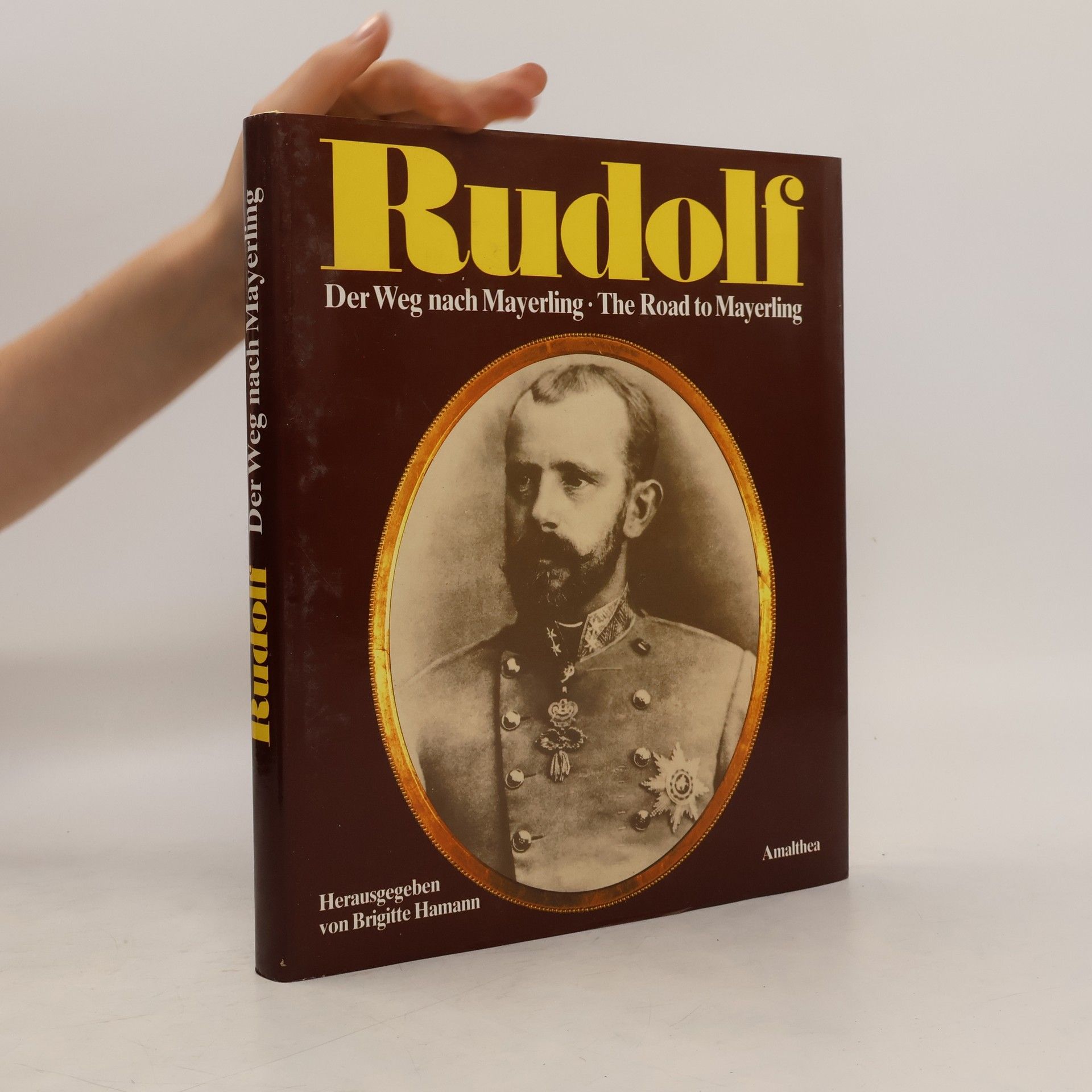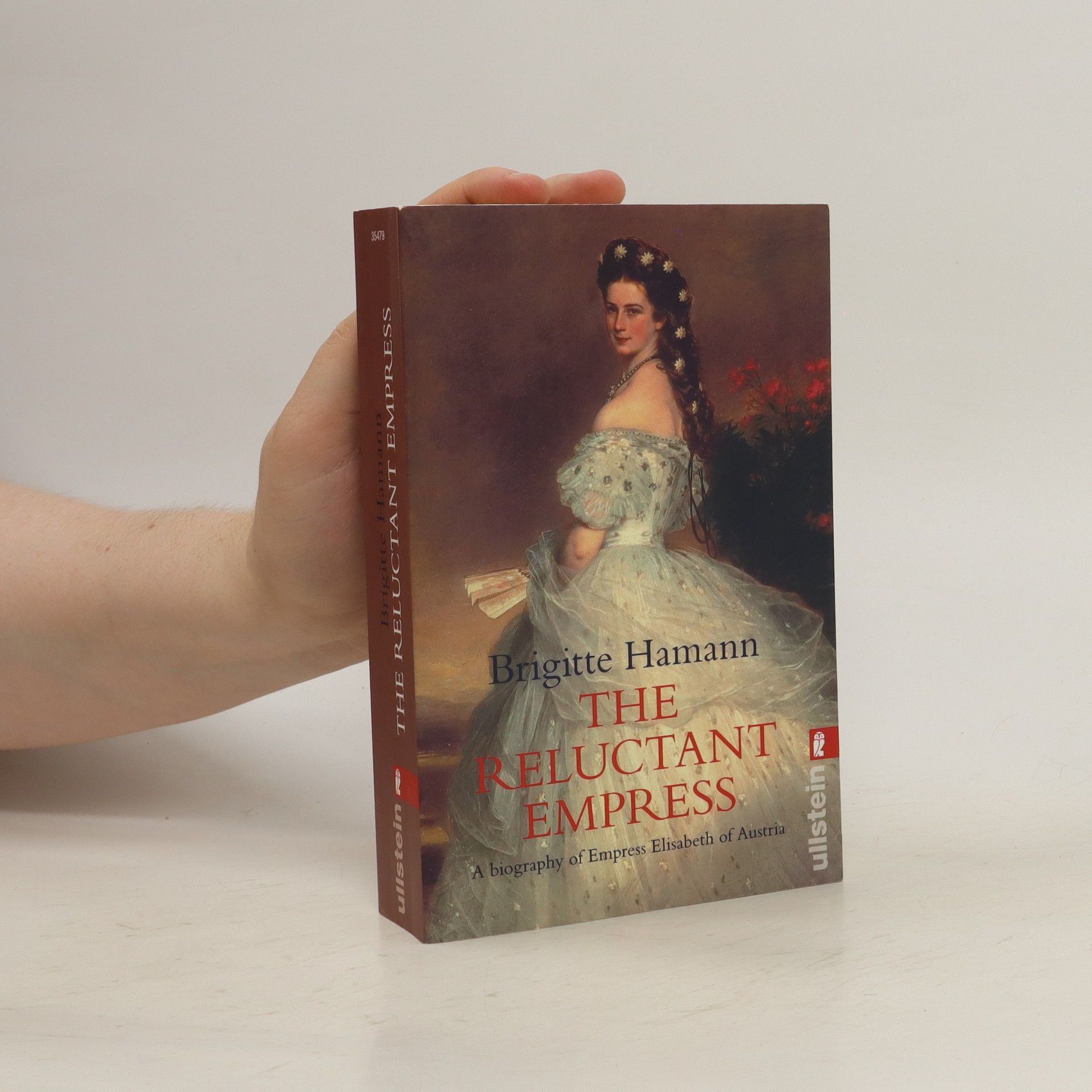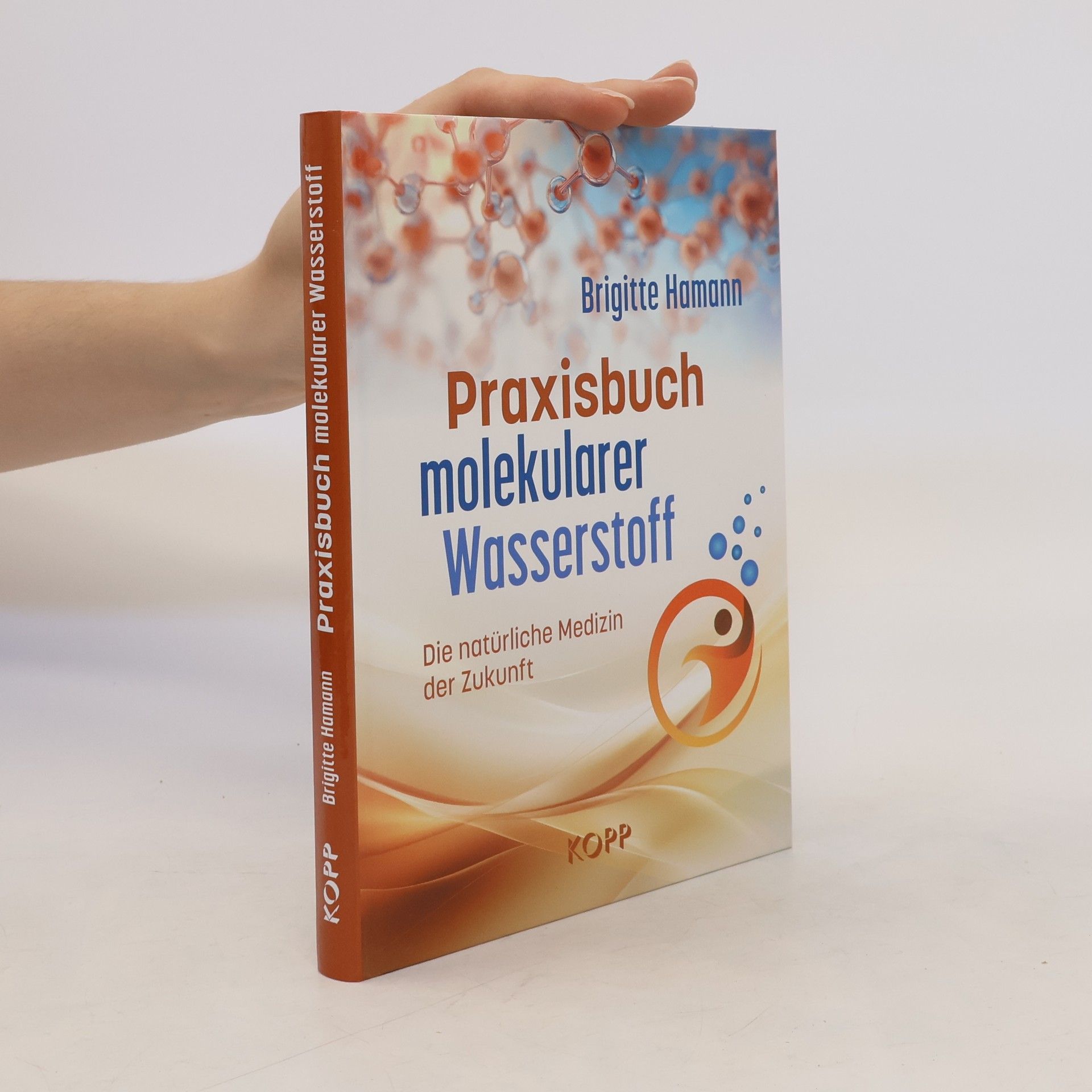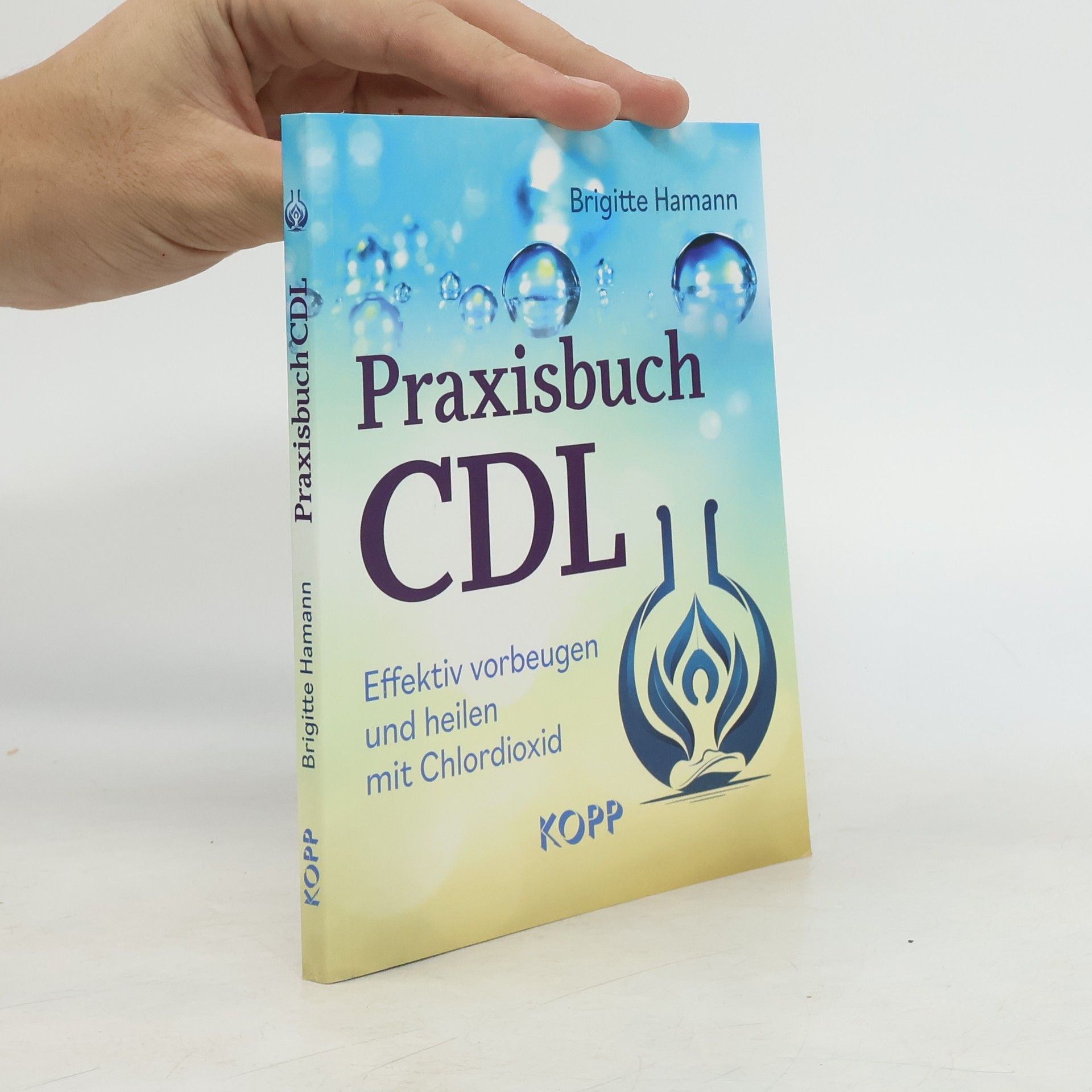Brigitte Hamann Book order







- 2024
- 2023
Gehirnenergie
Geistig und körperlich fit bis ins hohe Alter - Mit wertvollen Tipps für Ihre mentale Gesundheit
Optimieren Sie Ihr Gehirn mit einem wissenschaftlich fundierten Ansatz für mentale Gesundheit! Fühlen Sie sich wacher und leistungsfähiger? Möchten Sie mit mehr Leichtigkeit und Freude durch den Tag gehen, kreativer sein und das Leben intensiver erleben? Streben Sie nach einem besseren Gedächtnis und mehr Dynamik, unabhängig von Ihrem Alter? Dieses Buch zeigt das Potenzial eines optimal funktionierenden Gehirns. Der Schlüssel ist die Neurogenese, also die Bildung und Neuvernetzung von Nervenzellen. Sie ermöglicht eine Erneuerung des Gehirns und steigert dessen Leistung, was in jedem Alter möglich ist und die Grundlage für ein erfülltes Leben bis ins hohe Alter darstellt. Die Neurogenese-Rate kann in allen Lebensphasen verbessert werden. Beginnen Sie, gehirngerecht zu leben und sich zu ernähren, um positive Veränderungen zu erfahren! Sie lernen, wie Ihr Gehirn funktioniert und wie es gesund bleibt, Ihr Denk- und Erinnerungsvermögen zu verbessern, Neurogenese durch körperliche Aktivitäten anzuregen und die richtige Ernährung zu wählen. Zudem erfahren Sie, welche Nahrungsergänzungsmittel die Gehirnleistung unterstützen, die besten mentalen Übungen, um Höchstleistungen zu erzielen, und wie Sie Stress und Depressionen entgegenwirken. Entdecken Sie, warum ein Lebenssinn wichtig ist und wie Stress sowie elektromagnetische Strahlen Ihr Gehirn beeinflussen. Verhindern oder verzögern Sie Demenz und Alzheimer und führen Sie ein vitales L
- 2022
Vitamin D3 hochdosiert
Neueste Erkenntnisse über die Dosierung und die fünf wichtigsten Co-Faktoren
- 2021
Geheimnisvolle Zirbeldrüse
mächtige Selbstheilungskräfte aktivieren - das Bewusstsein erweitern - und das Dritte Auge öffnen
- 2021
Drehen Sie die Jahre zurück mit Kollagen
Wie Sie Ihr Aussehen verjüngen und Ihren Körper von Grund auf stärken
- 2021
Praxisbuch CDL
Effektiv vorbeugen und heilen mit Chlordioxid
Ist CDL eine mögliche Medizin der Zukunft? In Deutschland wird es zu Unrecht verkannt! Forschungen zeigen, dass CDL (Chlordioxid) wirksam im Kampf gegen Covid-19 ist und weit über Corona hinaus gesundheitliche Vorteile bietet. Brigitte Hamann beleuchtet in ihrem Praxisbuch die Potenziale dieses oft ignorierten Heilmittels. Trotz der nachgewiesenen Wirksamkeit ist CDL in Deutschland als Medikament nicht zugelassen, während es in anderen Ländern, einschließlich einiger afrikanischer Staaten, positive Ergebnisse erzielt hat. Die Bill & Melinda Gates Foundation und die FDA blockieren weitere Forschungen, da CDL kostengünstig, für alle zugänglich und nicht patentierbar ist, was die Pharmaindustrie nicht profitabel findet. Dieses Buch informiert über die vielseitigen Anwendungsmöglichkeiten von CDL: Es tötet Krankheitserreger durch Oxidation, wirkt gegen Bakterien, Viren, Pilze und sogar multiresistente Keime wie MRSA. Dabei schont es gesunde Zellen und nützliche Bakterien. CDL beseitigt schädliche Biofilme, leitet Schwermetalle aus und hat sich als wirksam gegen SARS-CoV-2 erwiesen. Zudem kann es Blutgerinnsel auflösen und den programmierten Tod von Krebszellen auslösen. Hamann bietet wertvolle Tipps zur Anwendung, untermauert durch aktuelle wissenschaftliche Erkenntnisse.
- 2021
Melatonin
12 Gründe, warum Melatonin die Basis für Ihre Gesundheit ist
Melatonin ist ein uraltes Molekül, das über Milliarden Jahre zurückverfolgt werden kann und von Anfang an alle Lebensformen vor freien Radikalen schützte. Im Laufe der Evolution übernahm dieses Hormon immer komplexere Aufgaben und ist heute ein unverzichtbarer Grundbaustein für unsere Gesundheit. Es wird in der Zirbeldrüse im Gehirn produziert und wirkt als Taktgeber für die inneren Uhren unseres Körpers. Melatonin spielt eine zentrale Rolle in verschiedenen Körpersystemen: Es reguliert den Tag-Nacht-Zyklus, bietet Zellschutz, verbessert den Schlaf und ermöglicht lebenswichtige Prozesse wie Regeneration und Reparatur während der Nacht. Darüber hinaus schützt es das Herz-Kreislauf-System und ist entscheidend für die Mitochondrien, die Energiekraftwerke unserer Zellen. Melatonin wirkt intelligent und passt sich den Bedürfnissen des Körpers an, fördert die optimale Immunantwort, indem es überschießende Reaktionen verringert und schwache stärkt. Zusätzlich erhöht Melatonin die Aktivität des Langlebigkeitsgens SIRT1 und verstärkt den Selbstreinigungsprozess der Zellen. Es verlangsamt das Altern und kann als Jungbrunnen wirken. Die renommierte Gesundheitsexpertin Brigitte Hamann erklärt verständlich, wie wichtig Melatonin für unsere körperliche, seelische und geistige Gesundheit ist und warum es oft nicht in ausreichender Menge vorhanden ist.
- 2020
Epidemien und Pandemien haben die Welt immer wieder erschüttert und viele Menschenleben gefordert. Doch nicht immer entsprechen sie dem, was uns präsentiert wird. Mit Impfstoffen kann man enorme Gewinne sowie Einfluss und Macht erzielen. Daher ist es wichtig zu hinterfragen, was Menschen tatsächlich krank macht und wie wir aus der Krankheitsfalle entkommen können. Ein ausgewogener Stoffwechsel, ein gesundes Mikrobiom und ein starkes Immunsystem sind entscheidend, um selbst die gefährlichsten Krankheiten zu besiegen oder deren Ausbruch zu verhindern. In Zeiten schwerer Epidemien gab es immer Menschen, die gesund blieben, während andere trotz Infektionen überlebten. Brigitte Hamann erläutert die Grundlagen stabiler Gesundheit und welche natürlichen Heilmittel effektiver sind als Medikamente. Sie deckt die wahren Ursachen für die Anfälligkeit gegenüber Infektionen auf und zeigt die schädlichen Faktoren, die uns krank machen. Zudem liefert sie umfassende Informationen zu Corona, den mRNA-Massenimpfungen und deren Konsequenzen. Das Buch vermittelt, was notwendig ist, um sich zu schützen und langfristig gesund zu bleiben. Es bietet sieben Strategien für eine stabile Gesundheit und betont die Bedeutung eines intakten Immunsystems zur Überwindung von Infektionen sowie umfassendes Wissen über Impfstoffe und deren Risiken.
- 2019
Adaptogene sind Heilpflanzen, die uns die Wunder der Natur auf besondere Weise näherbringen. Sie helfen, besser mit Stress umzugehen, steigern die Widerstandskraft und bringen Körper, Geist und Seele ins Gleichgewicht. Diese Pflanzen wachsen unter extremen Wetterbedingungen und zeigen eine bemerkenswerte Anpassungsfähigkeit, die sie auch auf den Menschen übertragen können. Ihr Name leitet sich vom lateinischen Wort „adaptare“ ab, was „anpassen“ bedeutet. Obwohl sie noch als Geheimtipp gelten, verbreitet sich ihr Ruf schnell. Zu den bekanntesten Adaptogenen zählen Ashwagandha, Eleuthero, Heiliges Basilikum, Rhodiola und Schisandra. Sie wirken vielseitig und sind nicht auf bestimmte Erkrankungen oder Symptome spezialisiert. Ihr Ziel ist es, die Harmonie im Körper wiederherzustellen, ähnlich wie sie sich in der Natur an wechselnde Gegebenheiten anpassen. Adaptogene fördern das Beste aus dem, was sie in Körper, Geist und Seele vorfinden, und schenken uns Harmonie und Ordnung. Sie unterstützen uns dabei, die Gesundheit zu bewahren oder zurückzugewinnen und sind ein Ausdruck eines Lebensgrundprinzips. Mit ihrer mächtigen und geduldigen Wirkung sorgen sie für Gleichgewicht in allen Lebensbereichen.
- 2019
Unser Lilith-Thema zieht sich wie ein roter Faden durch das Leben. In bestimmten Lebensphasen geschehen Dinge, die es wiederaufleben lassen. Wenn Sie sich diesen stellen, ist Lilith der Scheinwerfer, der die dunkle Seite des Mondes beleuchtet.







